Vivo X300 Pro review: I am the camera flagship now
The Vivo X300 Pro is the camera flagship of your dreams that you can't get... yet?
We may earn a commission if you make a purchase from the links on this page.

Vivo has freshly announced its new set of "camera flagships" — the Vivo X300 and Vivo X300 Pro. If you've been following, the X200 series that was released last year received a late entry this year — the Vivo X200 Ultra, which came with a Photography Kit and a telephoto extender add-on.
The bad news was that the Ultra was China-only. The good news we have now is that the new Vivo X300 Pro is compatible with its own Photography Kit with telephoto extender, and it should soon be available internationally. While we don't have an exact date, we do have a unit with global software and Play Store in our hands, so it shouldn't be long now, right?
And, as you wait for that, we went through all the steps to try out, test, and push the limits of the new Vivo X300 Pro. From that excellent camera, to how the new MediaTek chip inside performs, to that pretty, huge screen on the front:
Table of Contents:
Vivo X300 Pro Specs
Pushing the envelope from multiple angles
| Vivo X300 Pro | Vivo X200 Pro |
|---|---|
| Size and Weight 161.98 x 75.48 x 7.99 mm 226 g | Size and Weight 162.4 x 76 x 8.2 mm 223 g |
| Display 6.8", AMOLED 120 Hz, 4,500 nits peak 2800x1260px, 20:9 ratio, 453 PPI | Display 6.8", AMOLED 120 Hz, 4,500 nits peak 2800x1260px, 20:9 ratio, 453 PPI |
| Processor MediaTek Dimensity 9500 3 nm, 4.21 GHz | Processor MediaTek Dimensity 9400 3 nm, 3.63 GHz |
| Software OriginOS 6 / Android 16 | Software Funtouch 15 (eligible for OriginOS 6/Android 16) |
| Cameras Main: 50 MP, f/1.6 Ultra-wide: 50 MP, f/2.0 Zoom: 200 MP, 3.5x, f/2.7 Front: 50 MP, f/2.0 | Cameras Main: 50 MP, f/1.6 Ultra-wide: 50 MP, f/2.0 Zoom: 200 MP, 3.5x, f/2.7 Front: 32 MP, f/2.0 |
| Battery Size 6,510 mAh, Silicon-carbon [5,440 mAh international model] | Battery Size 6,000 mAh, Silicon-carbon [5,220 mAh international model] |
| Charging Speeds 90 W wired 40 W wireless | Charging Speeds 90 W wired 30 W wireless |
| Prices International availability pending | Prices €1,299 (512 GB + 16 GB) |
Vivo X300 Pro Design and Display
New flat look, new Action Shortcut Button!
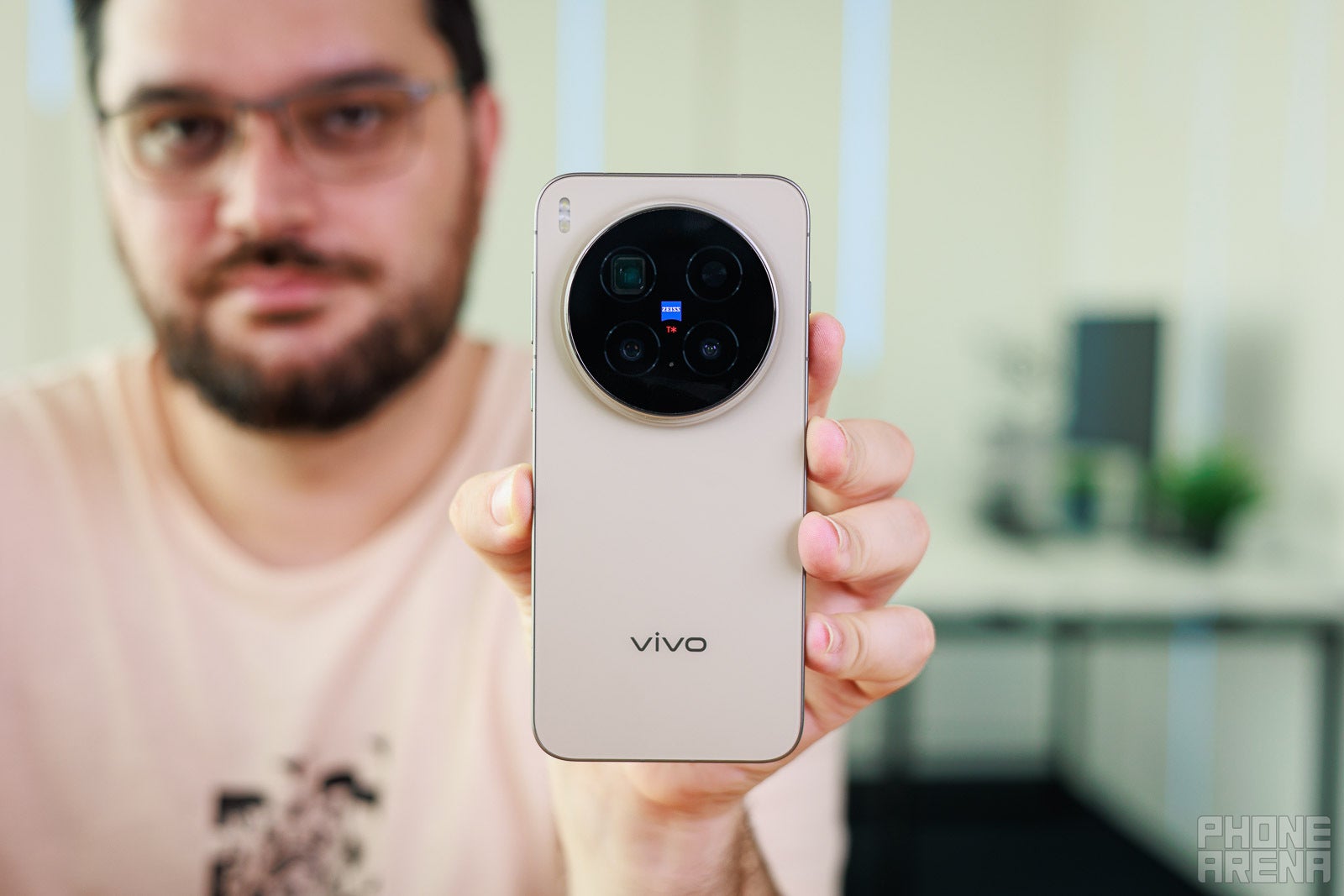
The Vivo X300 Pro rocks a new-ish design. While its predecessor had soft edges, with its glass panels arching into the frame both on the front and back, the new Vivo X300 Pro is pretty flat. Its aluminum frame does have beveled edges, so it feels soft on the palm, but it's noticeably more straight all around. The design kind of feels like an iPhone 16 Pro Max, and I am not making this comparison in vain. There's a new Shortcut Button on the left side of the phone, which looks, feels, and acts much like an Action Button on the iPhones. Even the menu to customize it looks exactly the same.
Well, there's the added benefit that the Shortcut Button can be programmed to perform two tasks instead of just the one — you can have it activate one thing with a press-and-hold, and another with double-press. That's a win.
So, the device feels pretty good in the hand. It's slightly top-heavy thanks to that massive camera module on the back, but not unmanageable. In fact, it's pretty nice to hold in one hand, with no case — if you are that brave!
The buttons are solid and clicky, the matte glass back is a fine grain that feels soft to the touch, and the build inspires confidence in general.
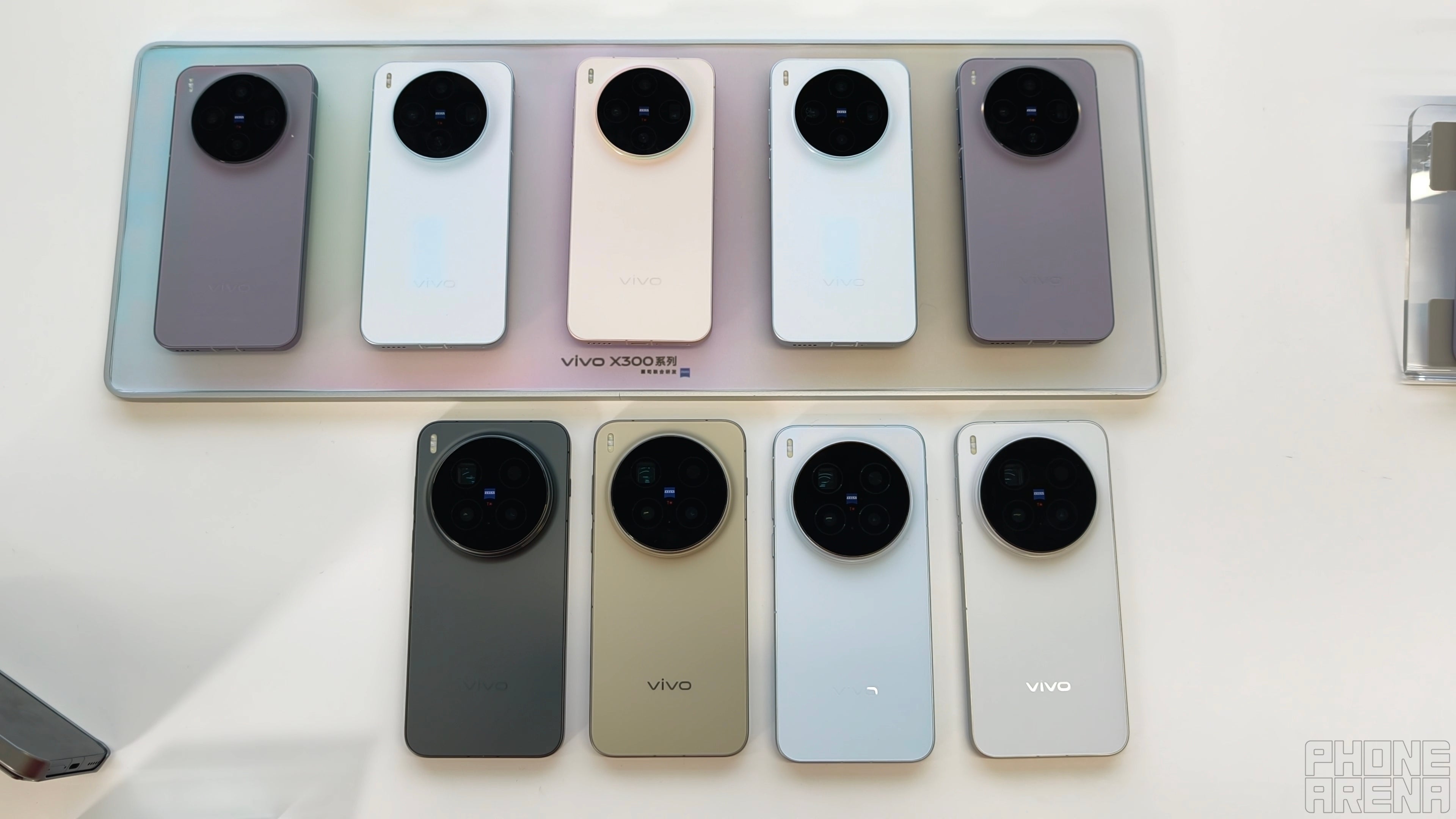
Vivo X300 colors on top, X300 Pro on bottom
The Vivo X300 Pro comes in dark gray, a tan-ish brown, light blue, or silver colors. Presumably, these should be the same options once it launches for global markets.
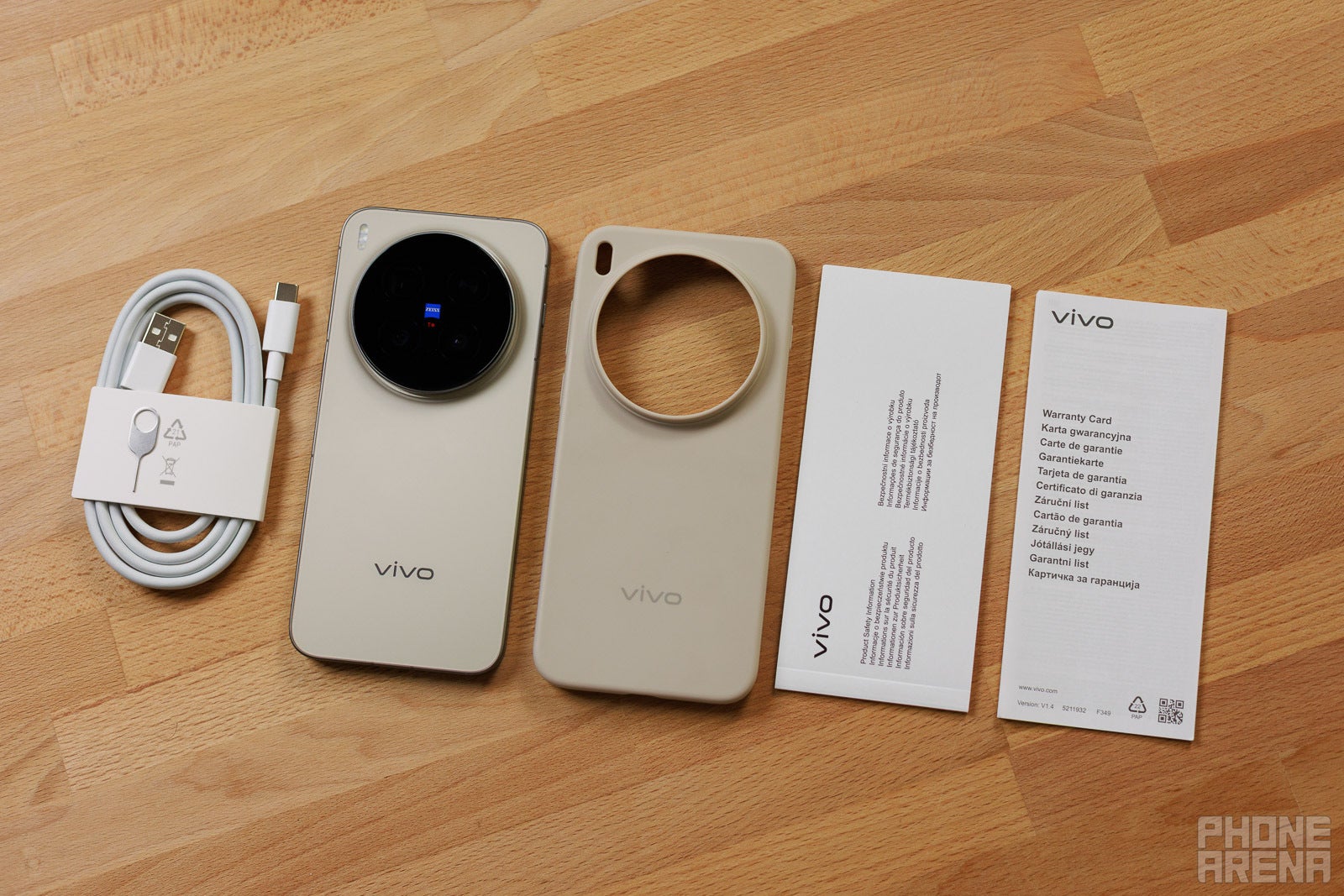
The standard box of the Vivo X300 Pro that we have came with a USB-A to USB-C charging cable, a nice rubber case, SIM tool, and some booklets. Yeah, no charger, which is weird because the Vivo X300 does have one in the box. Contents may vary depending on region.
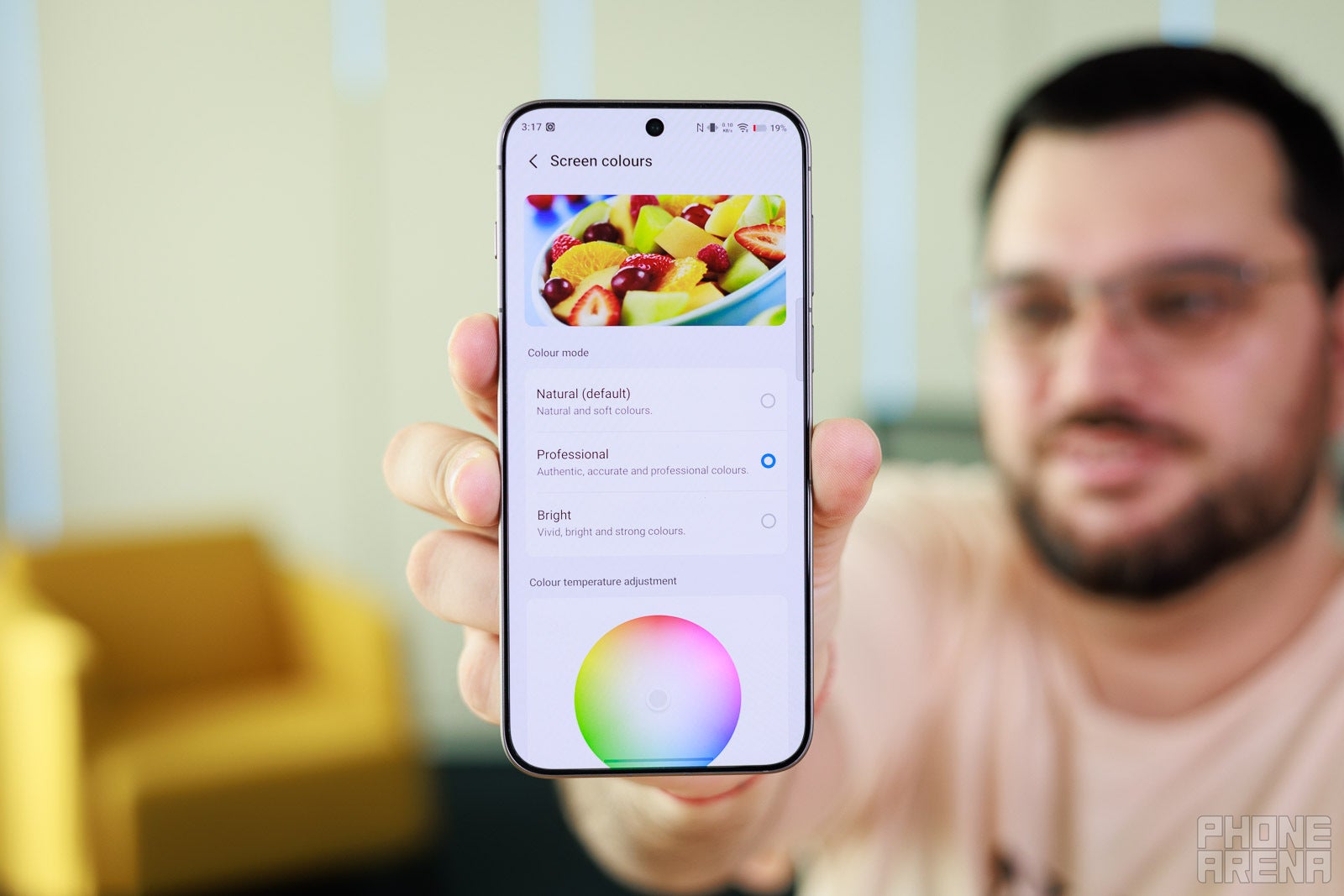
On the front, there's a 6.8" AMOLED panel with a smooth 120 Hz refresh rate. The 2800x1260 resolution amounts for about 450 pixels per inch, so it's very sharp to look at. Vivo rates it for 4,500 nits peak brightness, which means only a small fraction of the screen for a limited time. We measure for more real-life simulation at 20% APL and also check the screen at full-screen brightness:
And the max brightness measurements we got are excellent. This also translates to real world use, as we had no trouble viewing photos as we were walking around, taking endless samples with the camera. We'll get back to that.
The colors are also very close to target on the sRGB scale. But that point is quite moot once you get to see all the eye care accomodation settings the Vivo software gives you. Not just a simple blue light filter, but also dynamic color adjustment to match ambient lighting. There's also a Pro mode which turns all enhancements off and attempts to give you the most accurate color possible. Furthermore, it gives you choice over PWM dimming or DC dimming, and it's not just a toggle — they have been calibrated to react the same and not distort colors at minimum brightness.
For biometrics, we have an under-screen fingerprint scanner, which is very fast and accurate. In fact, when registering a new fingerprint, you just slide your finger over it instead of lifting and touching multiple times. It's shockingly fast to read and memorize an accurate print.
Vivo X300 Pro Camera
This is why we are here!
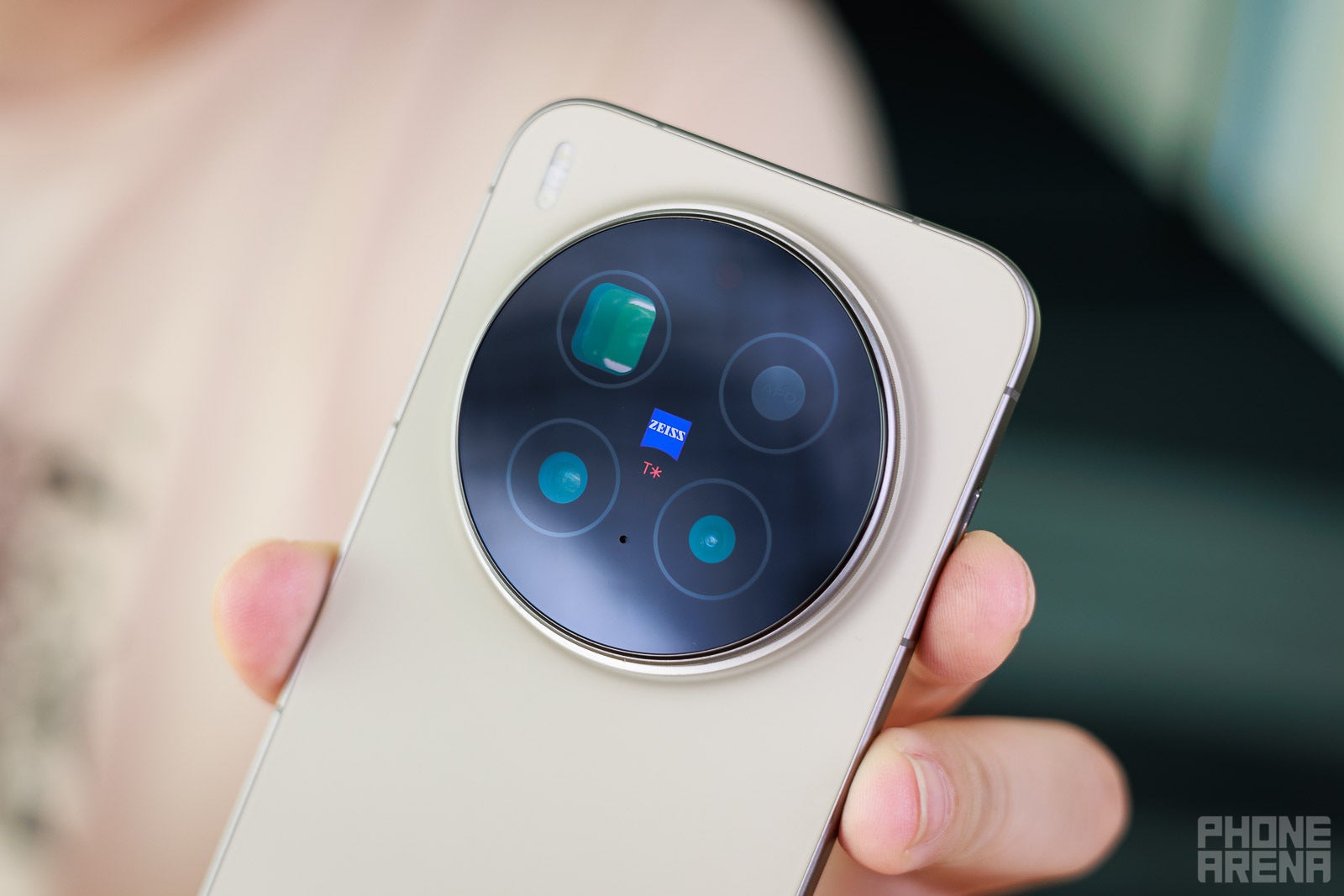
The Vivo X300 Pro is mere points away from reaching that "best" score in our lab's camera test. Notably, it's the phone that holds the best zoom quality score at the time of writing this review. And it's well-earned, as you will see in the samples below. We didn't even use the telephoto extender for the tests — this is all the phone. The current top-score holder is the Xiaomi 15 Ultra, which gets a few more overall points for better details and fewer traces of oversharpening.
It's certainly an unusual choice that Vivo put the high-res eggs in the zoom camera basket. It has a 200 MP sensor under the 3.5x telephoto lens. The rest of the cameras are all 50 MP. The main camera's relative focal length is 24 mm, but you can go for a slight crop-in for 36 mm with a quick tap on the 1x button — like on an iPhone. Which is why you will see some of the samples below labeled as 36 mm.
The Vivo X300 Pro starts up the camera app in a default Vivid mode, which amps up colors and exposure to create instantly shareable photos. It looks pretty good, but may be overkill for some scenes. There's also a Zeiss Natural mode, which drops contrast and vibrancy a little bit for slightly more "realistic" photos. My favorite is the Textured mode, which amps contrast up even further, but it doesn't perform well in low light. To be fair, I've been switching through color modes constantly, adapting and choosing the proper one for a scene, including the black-and-white filter which looks lovely.

Video looks well-exposed and has quite the wide dynamic range with pretty competent stabilization. It loses a few points vs the competition in fine details, but it's not a huge discrepancy. Our lab test also includes video from the selfie camera in the overall score, and this one is a bit fuzzier, so it dragged the overall points down. However, the main cameras and the zoom quality are pretty good for clips!

Video looks well-exposed and has quite the wide dynamic range with pretty competent stabilization. It loses a few points vs the competition in fine details, but it's not a huge discrepancy. Our lab test also includes video from the selfie camera in the overall score, and this one is a bit fuzzier, so it dragged the overall points down. However, the main cameras and the zoom quality are pretty good for clips!
Telephoto extender lens
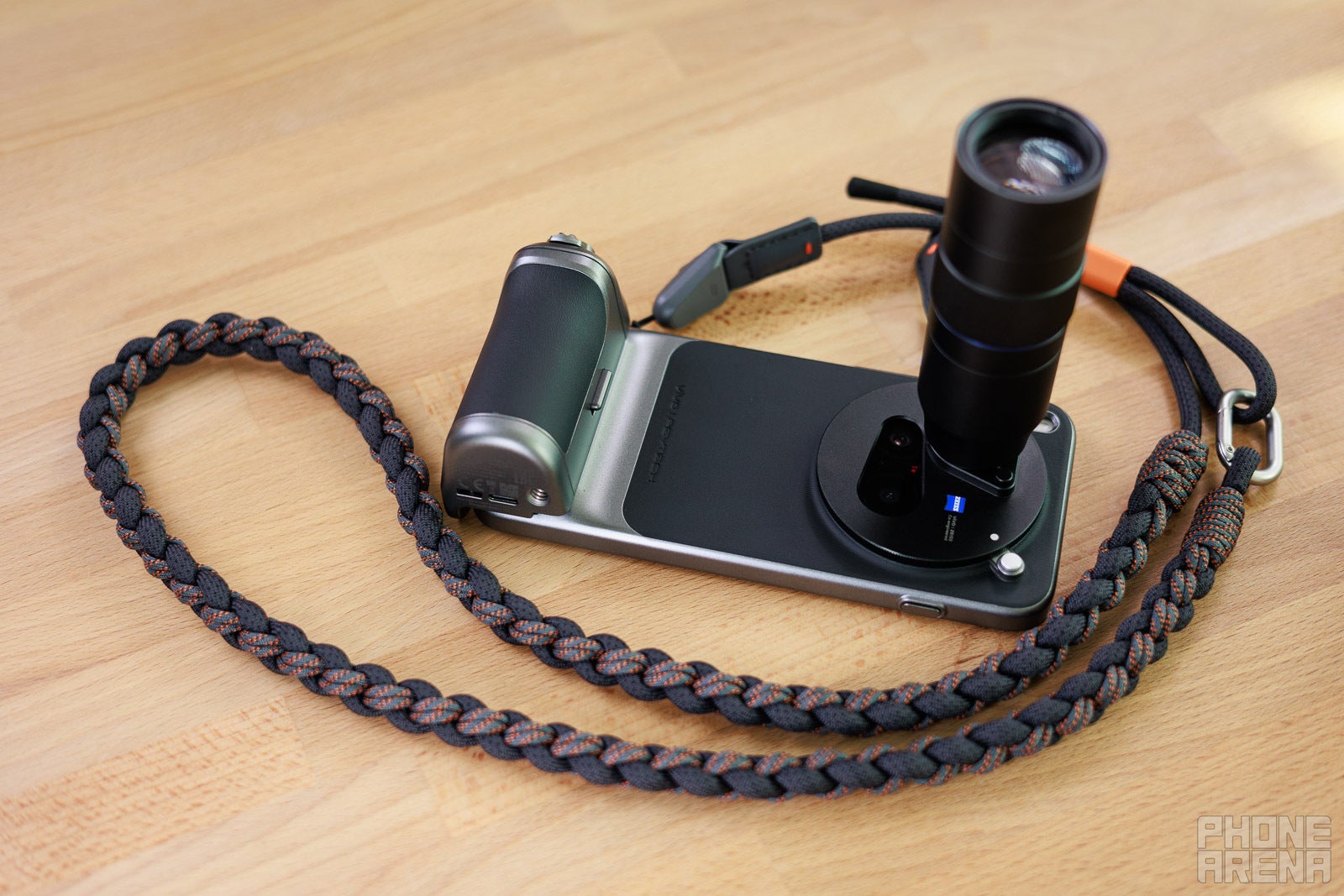
If you go all-out, you can purchase the Photography Kit, which includes a case, a detachable zoom lens to put on top of the 200 MP zoom camera, and a tough lanyard to keep the phone strapped to you. The benefit? Fantastic telephoto photography, longer max zoom, and clearer max zoom that shows you actual details and not AI recreations of them:
As you can see from the samples at the end there, when the zoom extender is off, the phone applies a lot of enhancements to scenes to create the illusion of a clearly zoomed-in photo. The snout of the deer has some lines on it, which the phone clearly "redrew". With the telephoto extender on, the "real" picture is revealed.
Vivo X300 Pro Performance & Benchmarks
First phone with MediaTek Dimensity 9500
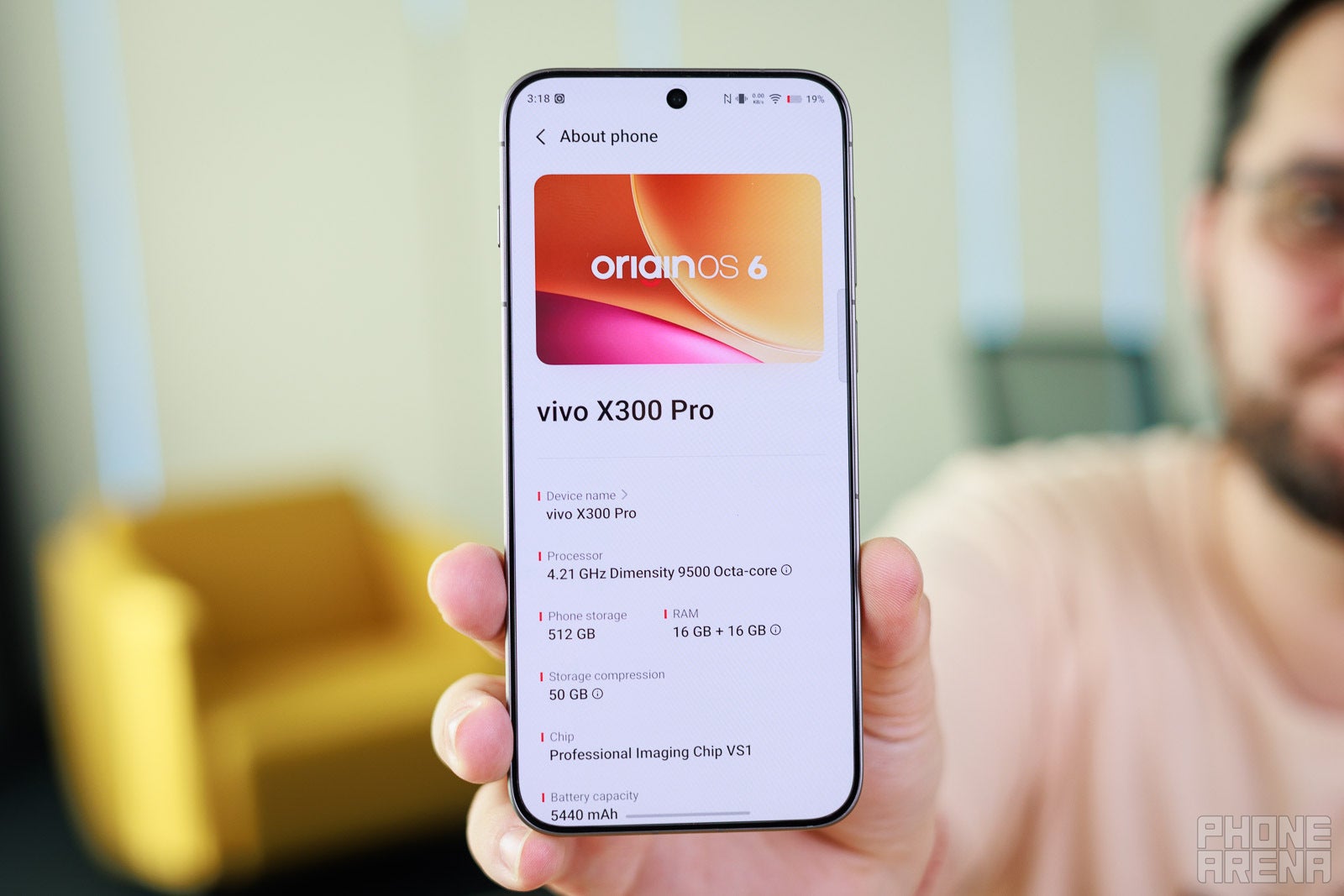
The Vivo X300 Pro is the first smartphone with the new 3 nm MediaTek Dimensity 9500. And for good reason — it's actually been developed in close partnership between the two companies. Vivo lent MediaTek its V3+ imaging chip for 4k video recording, so any phone that has the new Dimensity going forward will be able to make use of it. It goes to reason that the phone's software was also optimized to work in tandem with the powerful processor. And the results... well they are pretty good:
On single-core scores, the phone is still outpaced by Apple's latest chip. However, multi-core, which is what you want for heavy parralel tasks and multi-tasking, it's up there with the best of them. And you can feel it as you fly through the software.
GPU Performance
In GPU performance, the Vivo X300 Pro is an absolute champ, beating the competition in both top score and "minimum" score when it inevitably throttles down due to heat. All in all, a dependable phone for gamers, not just photographers.
Vivo X300 Pro Software
Vivo is bringing its OriginOS 6 to global units. Before, we used to get Funtouch OS, while Origin was China-only. If that means anything to you. Personally, I liked Funtouch, but it seems it wasn't a fan favorite. OriginOS has a bold new look, a lot of visuals... "borrowed" from iOS, and a lot of the shortcuts and fast functionality that I liked in Funtouch.
OriginOS 6 is blazing fast and buttery smooth. It is, in fact, so fast that you can tap one app icon, and while said app is opening you can tap another icon, interrupt the animation, and have the second one open. You can literally sit there chaining combos of fast-opening all the apps on your homescreen (if you have quick enough fingers). While this is ridiculously funny, and arguably useful, it also shows how responsive the OS is.
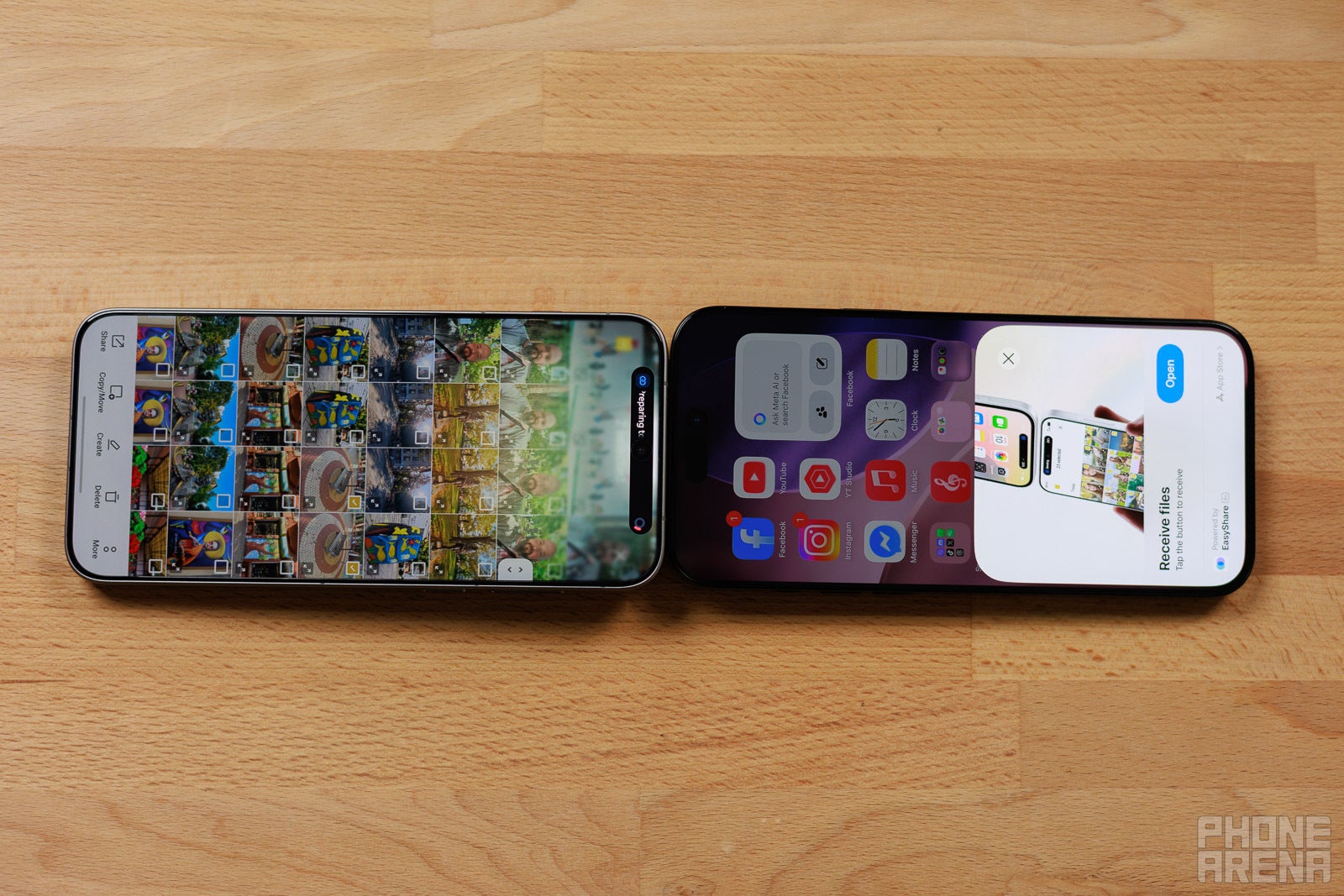
Moreover, Vivo is really trying to bridge the gap between Android and iOS. Vivo phones can share files to iPhones with just a tap of their NFC areas. There is a caveat — the iPhone needs to download the EasyShare app from the App Store, but the functionality is there and you get a sweet little animation that looks just like the iPhone's "touch to AirDrop". Vivo phones can also share between themselves with just a tap easily.
OriginOS 6 has a customizable lock screen and always-on-display which will look familiar, an Origin Island which is an active notification space like the Dynamic Island or like the Now Bar on Samsungs, AI writing tools, generative image editing, all the hip things. It's a pretty complete, all-rounded OS and I can't find many faults in it. It did have the occasional bug or crash — a couple of times I needed a restart, but we've been working with early global builds over the pre-launch period, so I can't comment on final release stability.
Vivo X300 Pro Battery
Pushing way north of 6,000 mAh! (in some regions)
The Vivo X300 Pro comes with a *takes breath* 6,510 mAh battery. Well, the Chinese model does. Due to shipping and transport regulations, Vivo has to tame that capacity a bit. In the case of the international X300 Pro model — it goes down to 5,440 mAh. That's still impressive, as it's north of the common Android flagship's 5,000 mAh standard, but still a dissapointment.
You may be wondering why big names like Samsung, Google, or Apple haven't switched to silicon batteries yet — well, there are concerns that silicon doesn't have great longevity, due to the material expanding significantly more than traditional li-ion batteries. Also, it's more expensive, with a ton of safety technologies applied on top, and I would imagine setting up mass production for it is no easy task. Plus, if shipping regulations are limiting you to 5,300 mAh — why bother right now, right?
It's worth noting that recent advancements in silicon-carbon batteries show that they can retain 80%+ health after 1,000-1,500 cycles, and Vivo is using "4th gen silicon-carbon anode batteries" here, so take it for what it is. However, only time will tell how this tech is doing.
PhoneArena Battery Test Results:
So, since our model has the 5,440 mAh cell, it doesn't really outperform and skyrocked over the Galaxy S25 Ultra and iPhone 17 Pro Max. We may be getting bigger batteries, but these lovely screens and powerfull processors are pulling in the other direction and "normalizing" battery life back down, instead of giving us the coveted two-day battery life.
The good news is that the Vivo X300 Pro charges up extremely fast — from 0% to 100% in 31 minutes with a 90W charger.
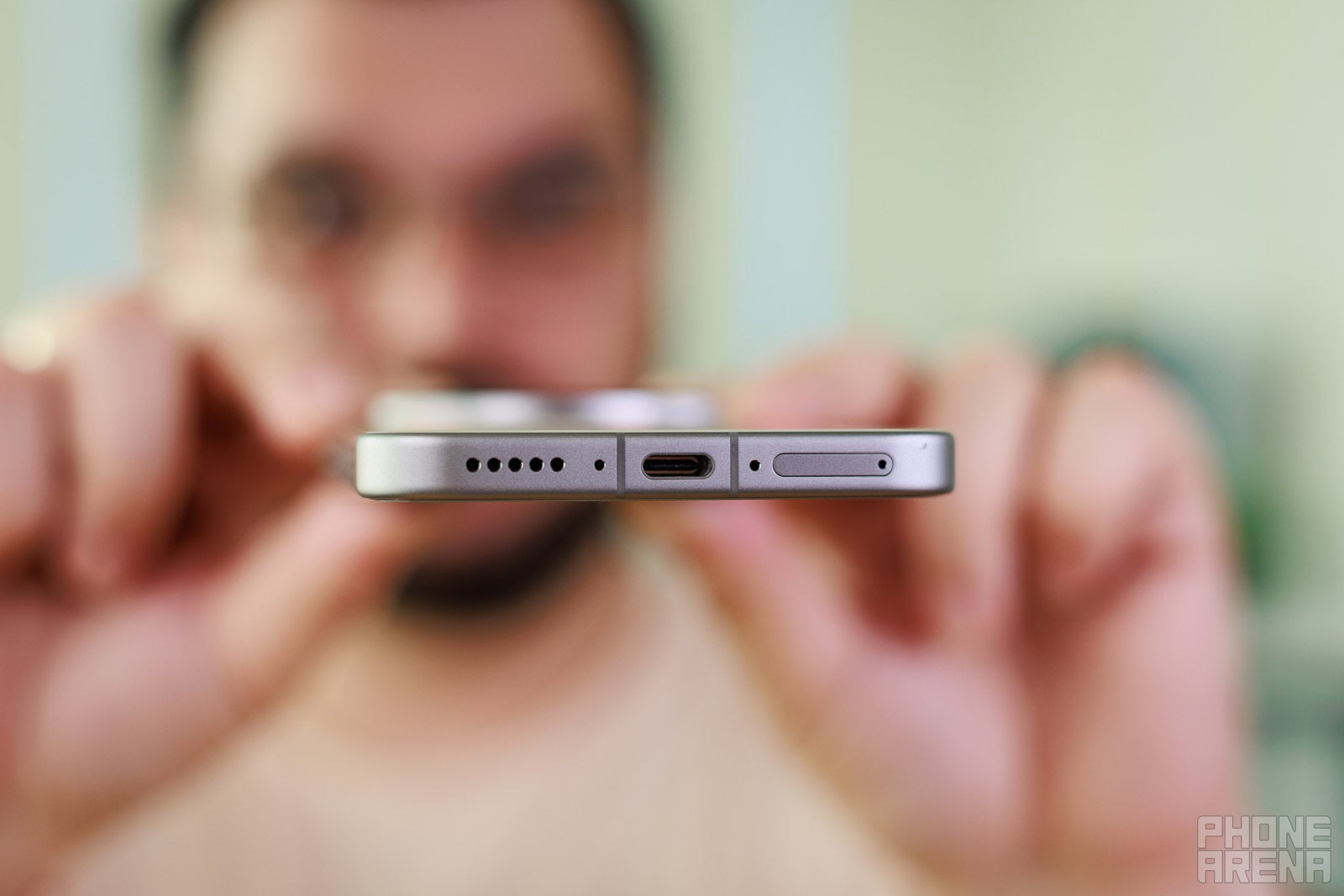
Even wireless charging is fast here — if you have the proper puck, and yes Vivo sells these, you can get 40W wireless charging.
Vivo X300 Pro Audio Quality and Haptics
The Vivo X300 Pro rocks the familiar stereo setup of bottom-firing and earpiece driver. They get comfortably loud, with some compression at max volume. The audio is pretty well balanced — good bass, no honkyness, and no ice-pick highs. You can definitely do fine with just the phone to enjoy various multimedia.
The haptics are also great — quick, precise, reassuring vibrations whenever you scroll to the end, click, tap, or toggle.
Should you buy it?
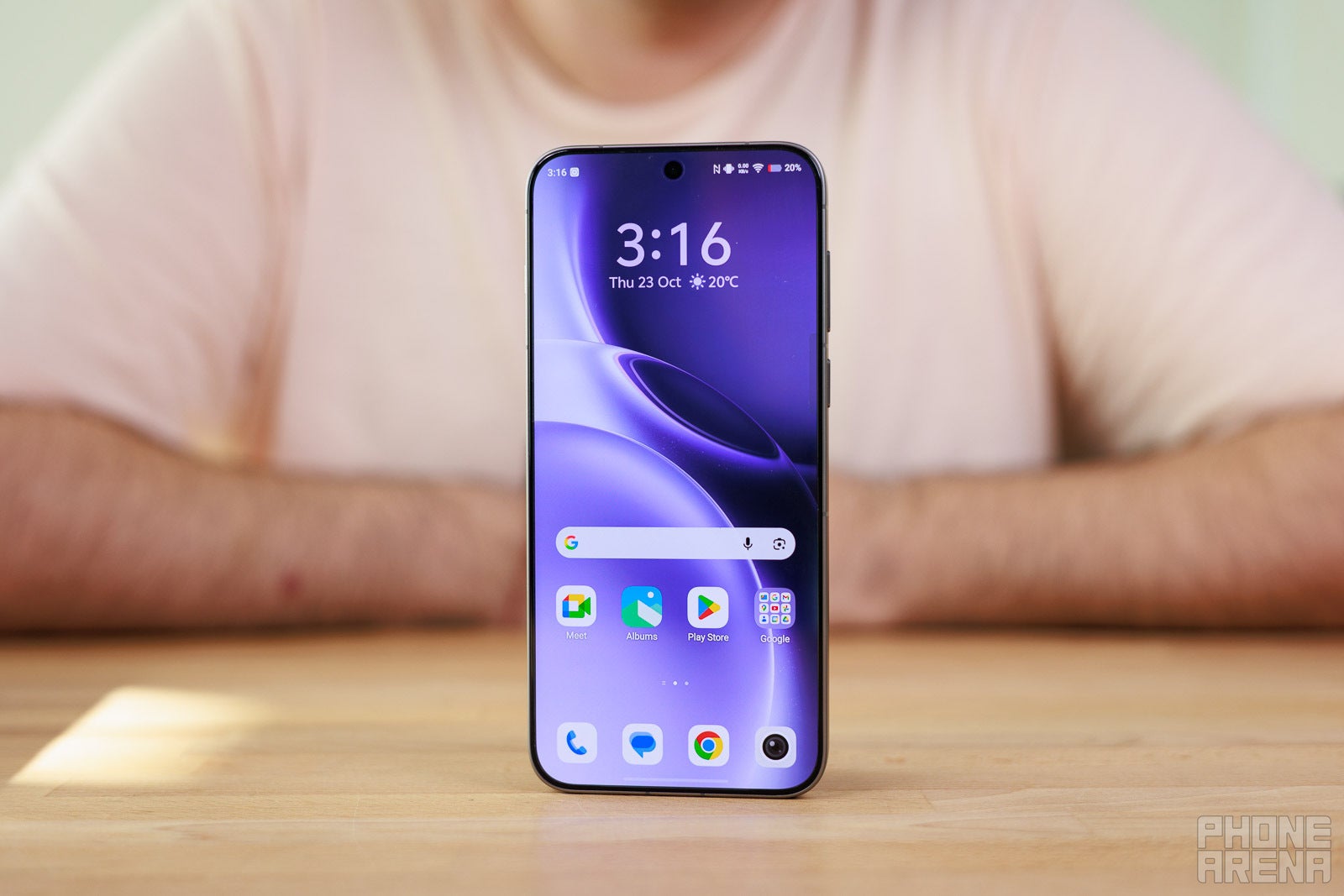
The Vivo X300 Pro hasn't launched internationally yet, but considering that we have a global unit in our hands — it's assumed that it will, and soon. The bad news is that it's still not coming to the US — we had that confirmed. You may be able to obtain one through resellers, but you will have to double-check and triple-check if your carrier has the needed bands for whatever unit you are looking at, and don't expect official support.
While we have no pricing details for global markets, its predecessor had an MSRP of €1,299, so it'll probably be around that point. That's around the area of a 256 GB iPhone 17 Pro, or 512 GB Galaxy S25 Ultra. And the Vivo competes with those quite well — excellent camera, buttery software, all the features the competitors have, Gemini on board. It will get 4 years of Android updates, so that's less than the 7 years that Samsung and Google offer. By all means, it's an excellent phone to get if you want to stray from the beaten path.
The Camera Kit was priced around €200 for the X200 Ultra, and we expect about the same for the X300 Pro's Camera Kit. If you are in the mood of going all-out, we'd definitely recommend getting that one too, as the telephoto extender allows for excellent portraits and zoom shots.
Follow us on Google News

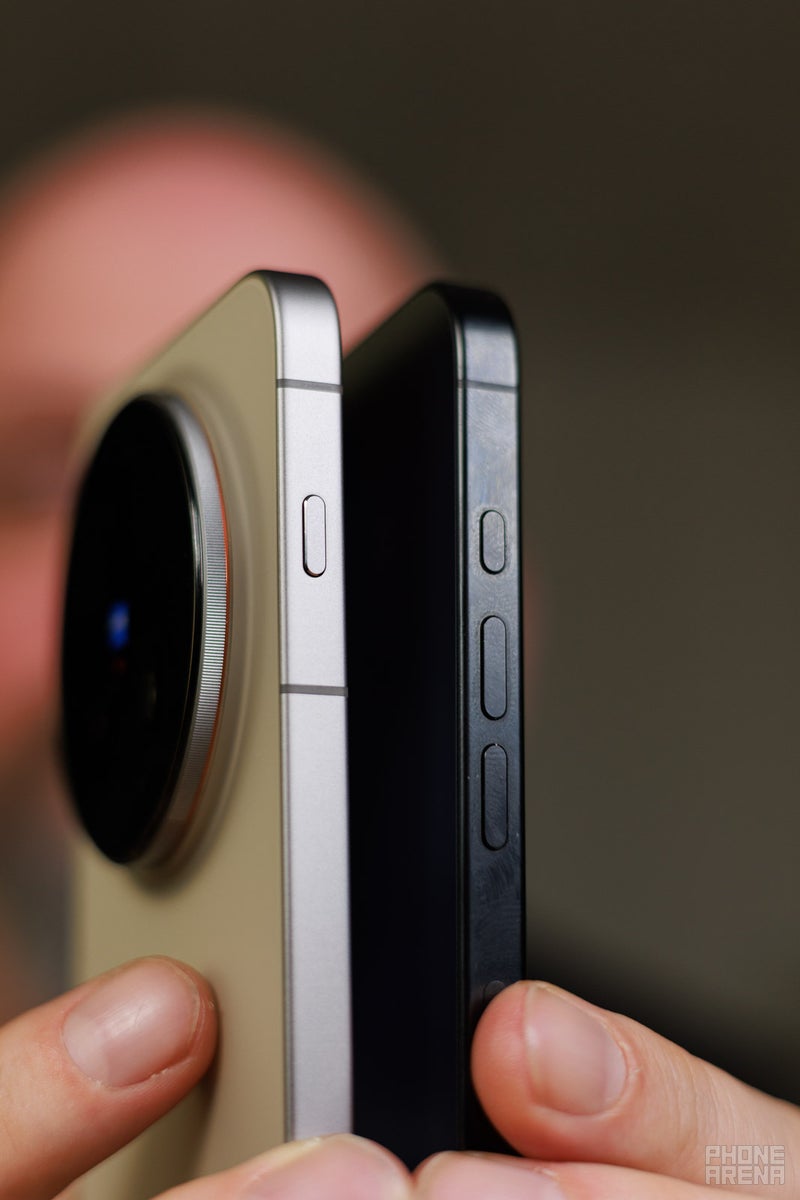
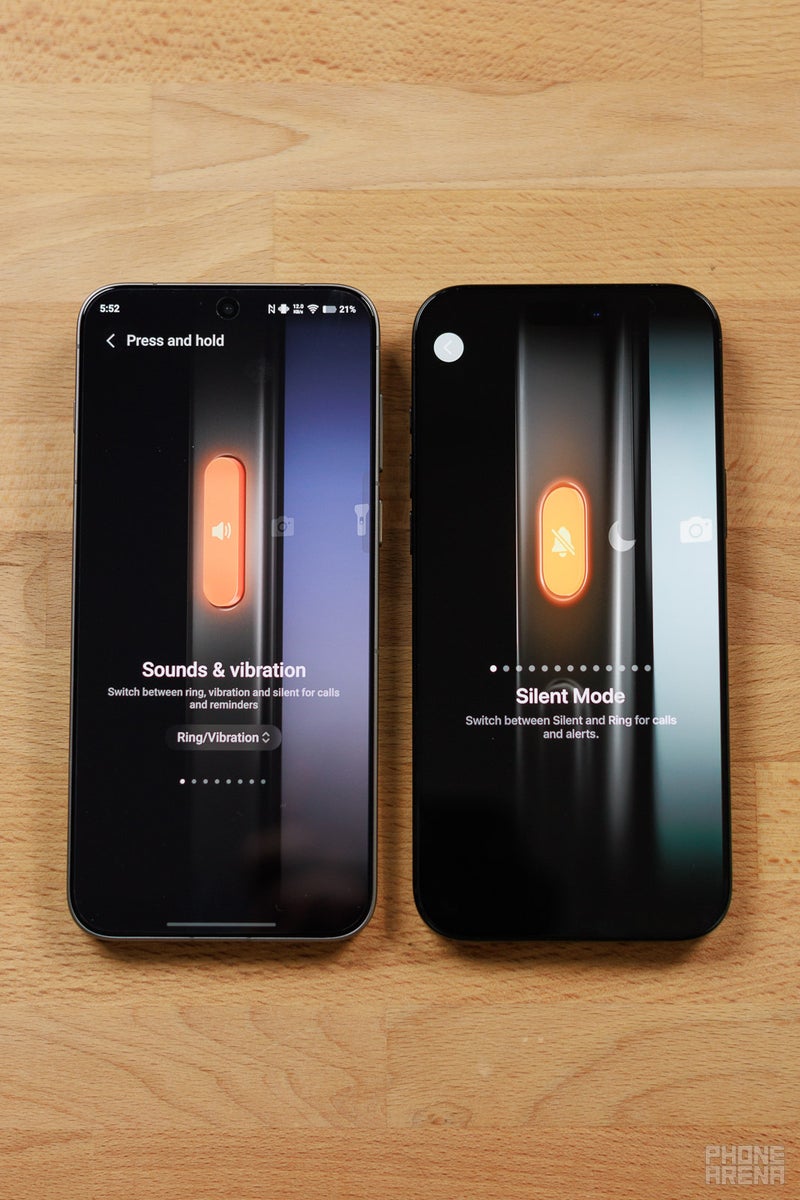
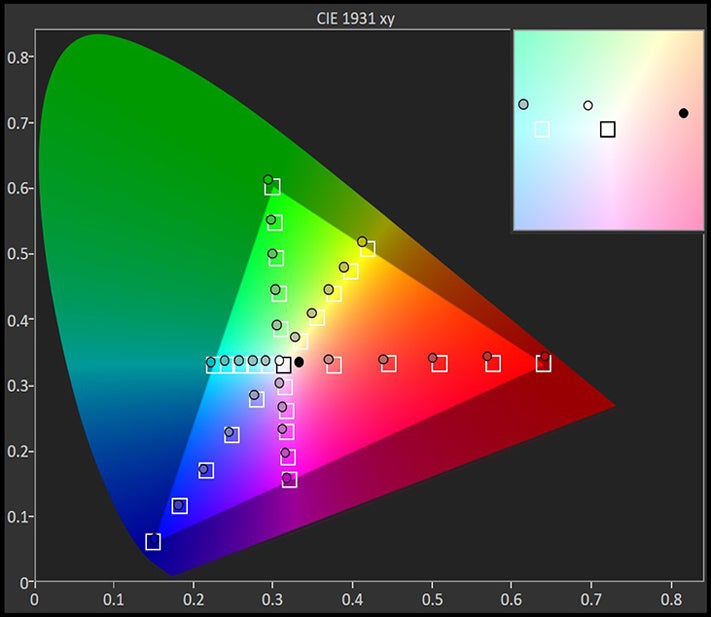











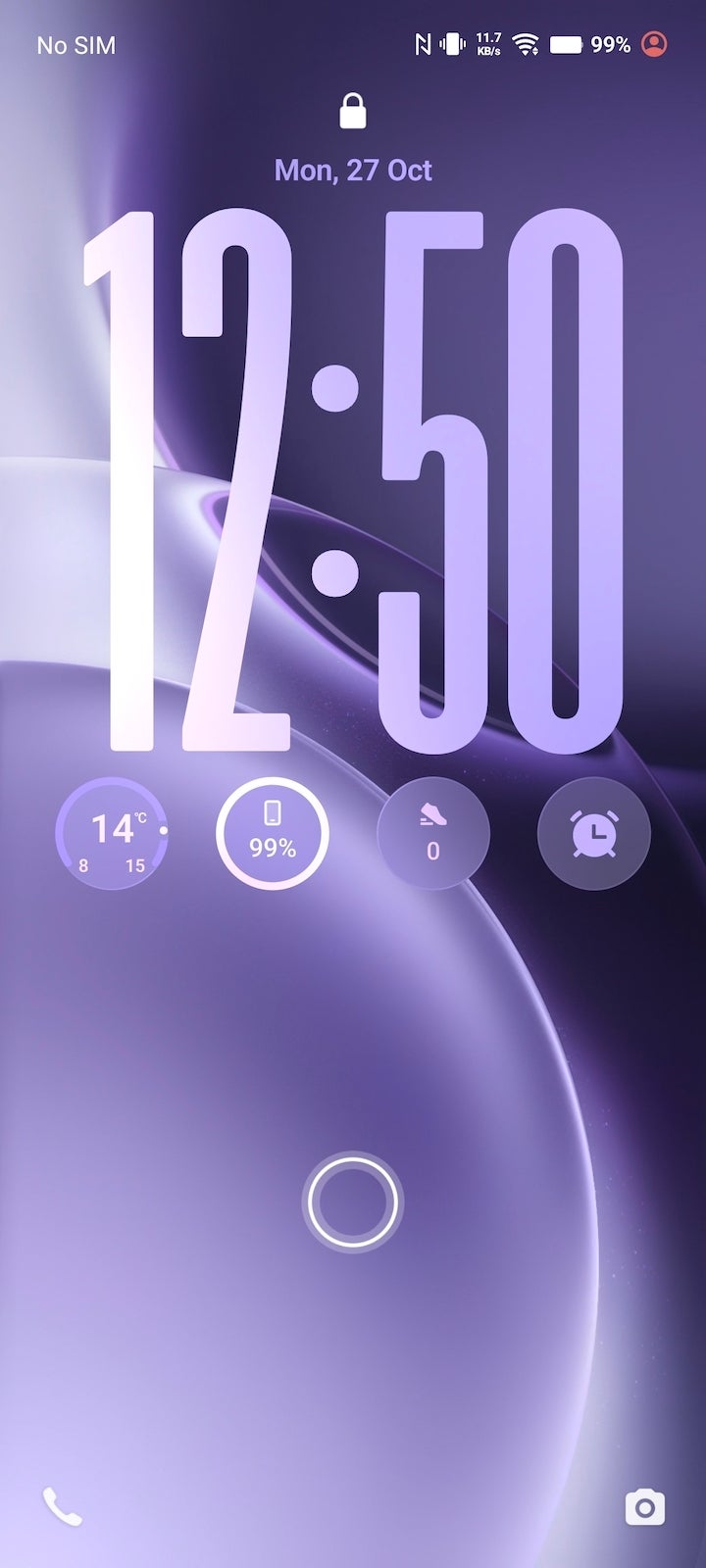
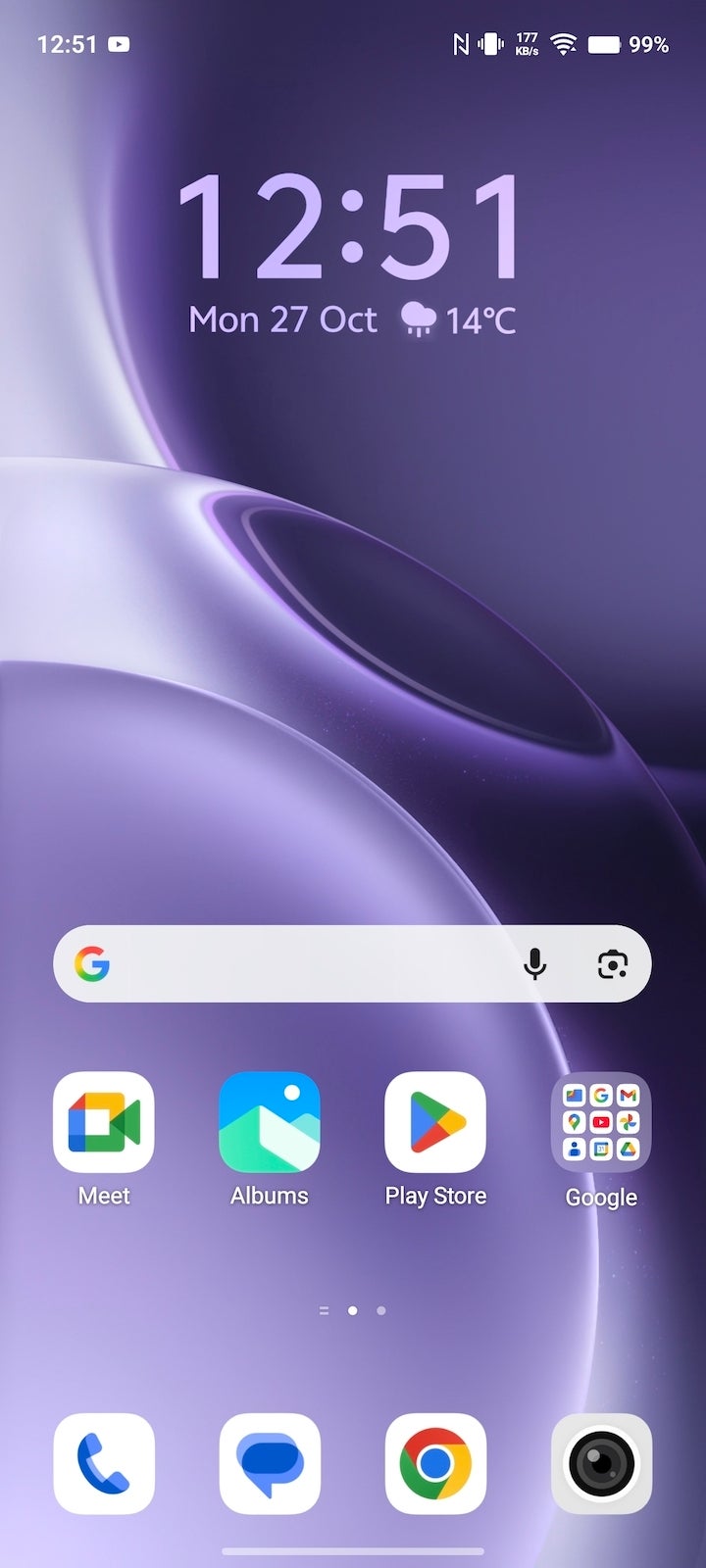
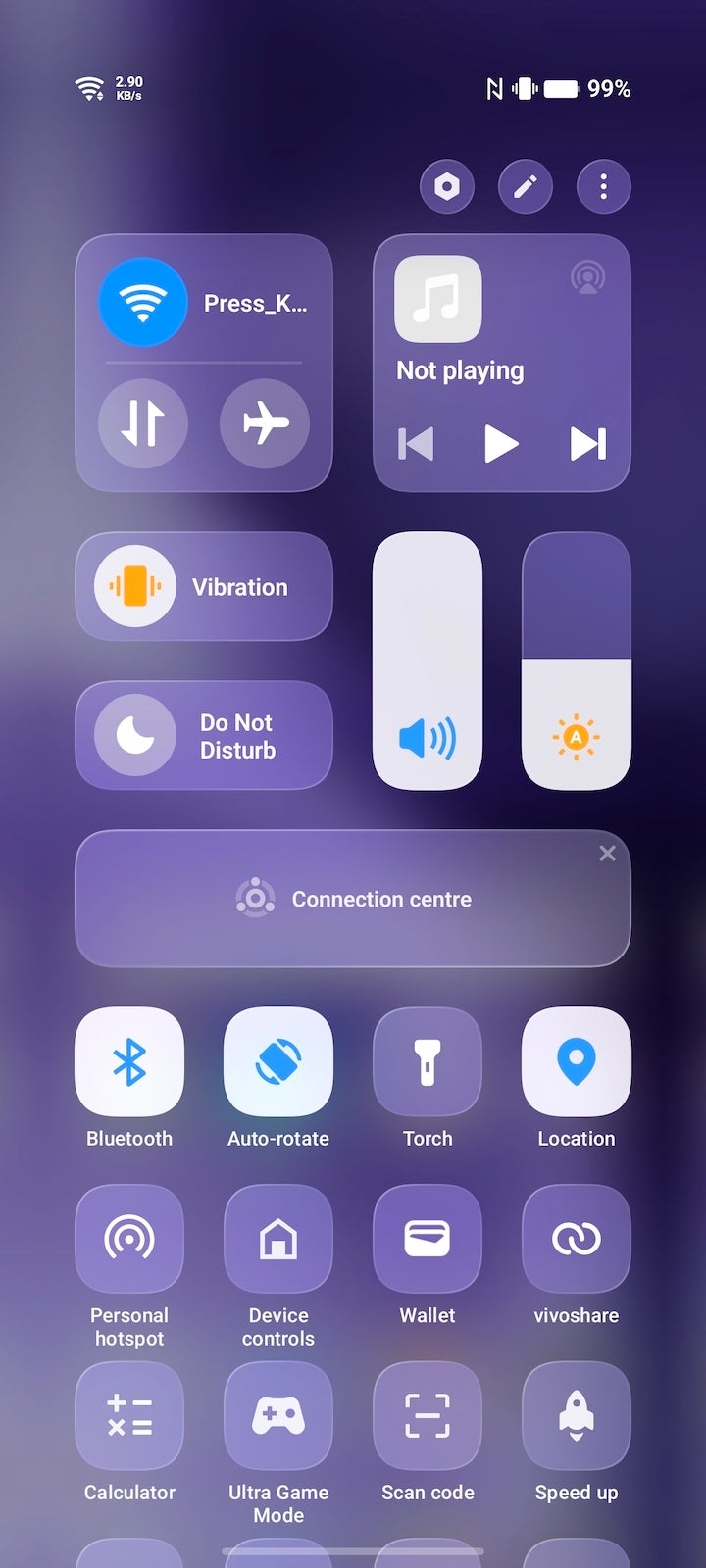
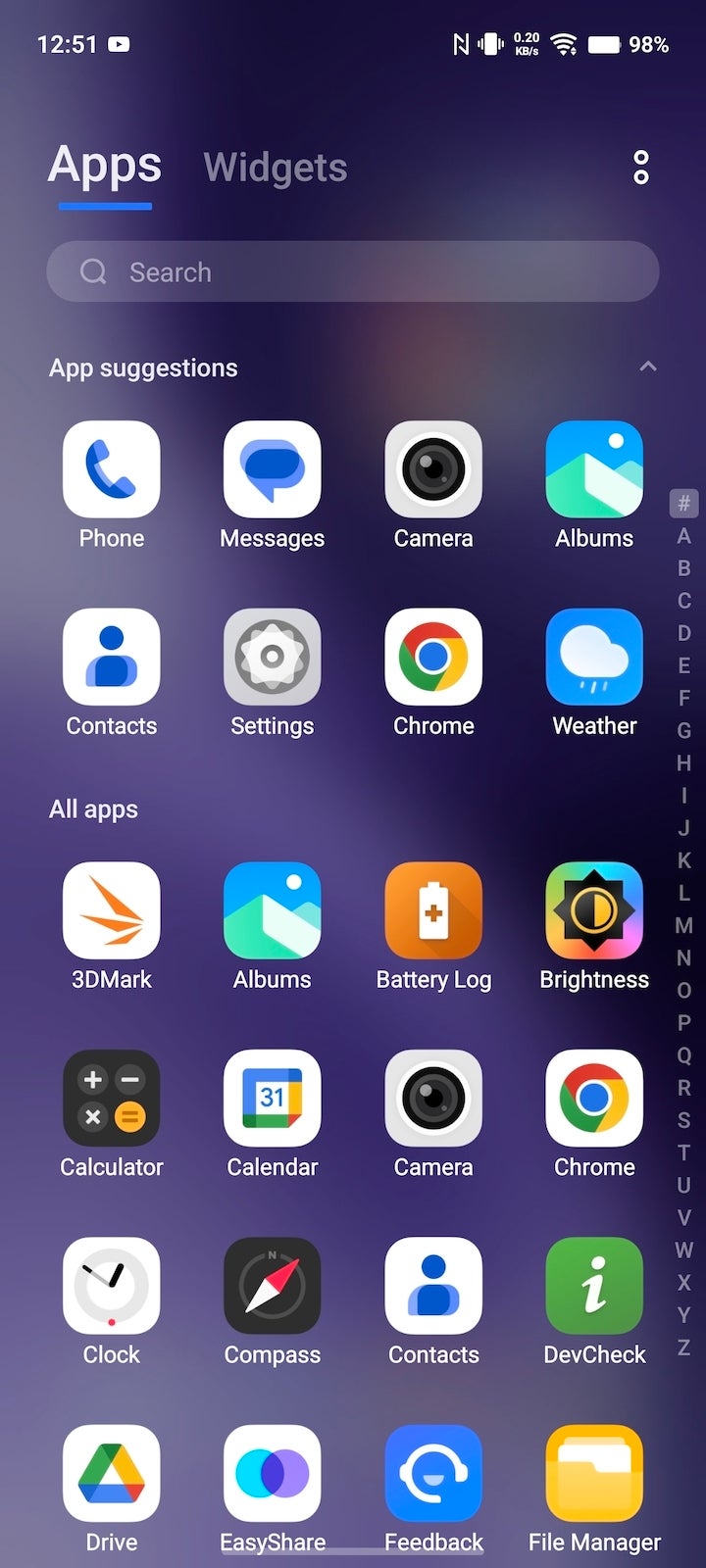
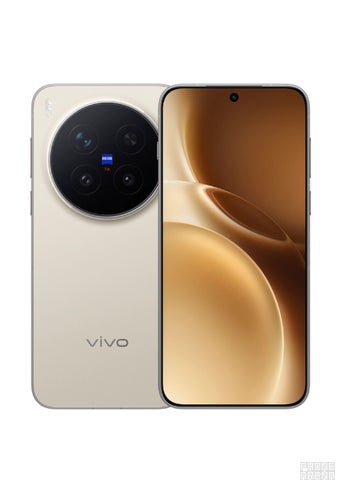

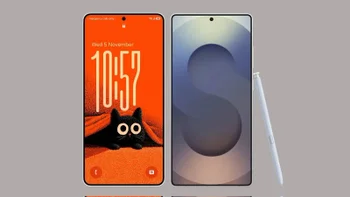

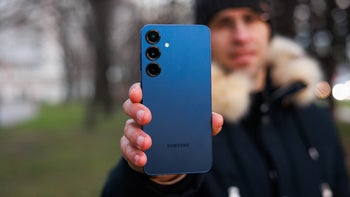
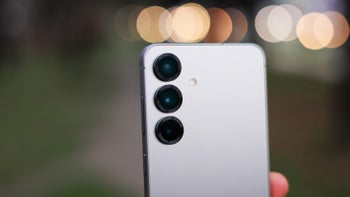
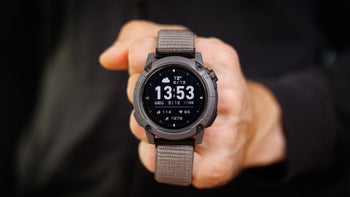
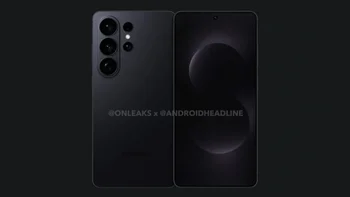


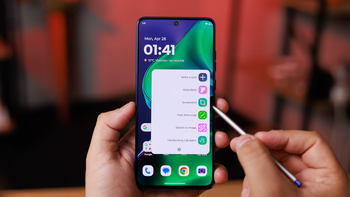


Things that are NOT allowed:
To help keep our community safe and free from spam, we apply temporary limits to newly created accounts: